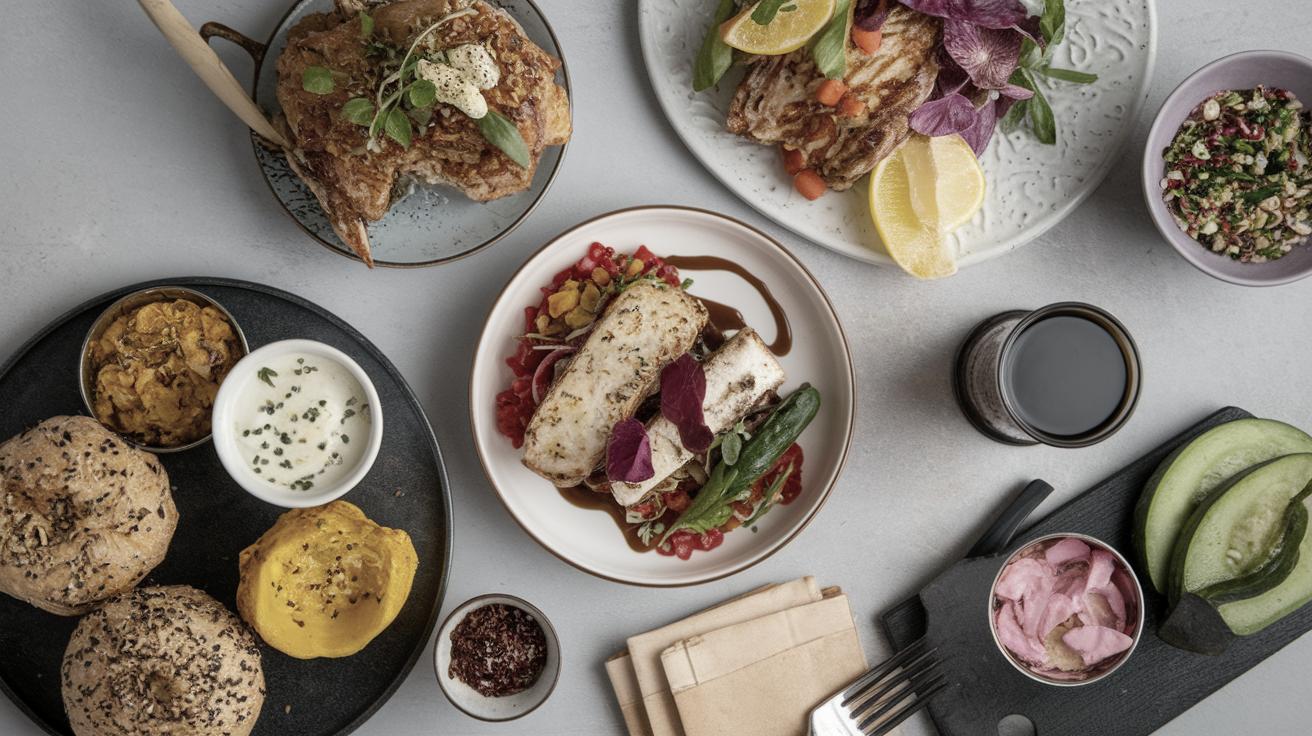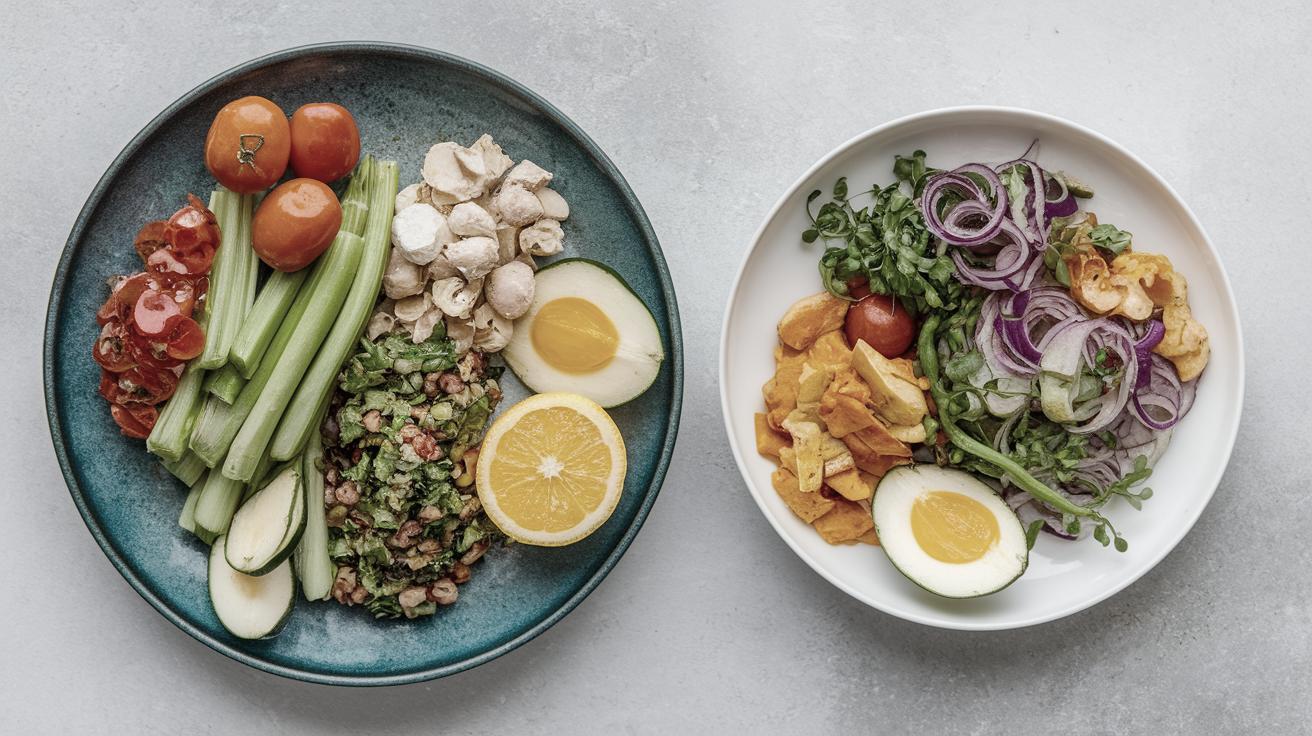Culinary Trends of Today: A Glimpse into the Future of Food
In the ever-evolving world of food and gastronomy, staying abreast of current trends is as essential as the ingredients that make our meals flavorful and nutritious. This blog post explores the latest trends shaping the culinary landscape in 2023. From transparency in food sourcing to advancements in cooking technology, and the gaining popularity of plant-based eating, these trends highlight the dynamic intersection of innovation, health consciousness, and environmental stewardship. Join us as we delve into the exciting world of food innovation, efficiency in cooking, and the resurgence of forgotten ingredients. Whether you’re a professional chef, a home cook, or simply a food enthusiast, this in-depth exploration will offer a comprehensive look at what lies on our plates now and in the future.
1. A Transparent Plate
The demand for transparency about the origins of food has reached an all-time high. Consumers are increasingly interested in knowing exactly where their food comes from and how it’s produced. This is not just about ethical considerations; it’s also about health and quality. Restaurants and brands that provide detailed information on sourcing practices, farm origins, and sustainable practices are witnessing a rise in consumer trust and loyalty.
Companies are adopting blockchain technology to offer traceability, where every step of the food’s journey is documented and can be verified. This transparency trend provides consumers with a sense of connection to the food they eat, enhancing their overall dining experience. As this trend grows, we can expect to see more innovation in how food traceability is communicated to the consumer.
2. Efficient Cooking
Efficiency in the kitchen is transforming from a desirable skill into a necessary one. With household schedules becoming more hectic and the desire for quick, high-quality meals increasing, efficient cooking methods are gaining traction. Tools such as air fryers, instant pots, and sous vide machines are becoming kitchen staples, allowing delicious meals with reduced time and effort.
Professional kitchens are also innovating by embracing automation and precision cooking. This trend doesn’t just cater to speed; it also reduces waste and increases consistency. As advancements in cooking technology continue, we expect efficiency to lead the way in redefining modern culinary methods.
3. Keep It Natural
A shift towards natural ingredients is sweeping through the culinary world. Consumers are prioritizing foods free from artificial additives, preservatives, and refined sugars. The focus is on fresh, whole foods and sustainably farmed ingredients, which are perceived as healthier and more environmentally friendly.
This trend is reflected in the growing popularity of farmers’ markets and the resurgence of organic and local sourcing. As more people become aware of the impact of their food choices on health and the environment, the demand for natural products will continue to rise, reshaping the gastronomic industry.
4. The Comeback of a Star Cereal
Once a forgotten staple, ancient grains like quinoa, farro, and spelt are making a comeback. Known for their high nutritional value, these grains are being incorporated into a variety of meal options, from breakfast bowls to gourmet dinner dishes.
The appeal of ancient grains lies not just in their health benefits but also in their versatility. Chefs are experimenting with these ingredients in novel ways, offering gluten-free, protein-rich alternatives that cater to diverse dietary needs. The comeback of these cereals highlights a broader trend towards nutrient-dense, sustainable dietary options.
5. Eat Less, Discard Less
Waste reduction is becoming a pivotal focus in food culture. This trend emphasizes consuming less and making the most out of the ingredients available. Techniques like root-to-stem cooking, which uses the whole plant, and nose-to-tail, which uses the entire animal, are gaining traction as effective ways to minimize waste.
Restaurants and home cooks alike are exploring creative methods to repurpose leftovers and reduce their carbon footprint. This movement not only benefits the environment but also encourages resourceful and innovative cooking techniques that can add depth and creativity to meals.
6. Optimized Food
Optimized food, a trend revolving around precision nutrition, focuses on tailoring meals to individual health needs. With technology allowing for detailed dietary and genetic testing, personalized diets have become more accessible, allowing people to optimize nutrient intake for better health outcomes.
This approach is influencing product development in the food industry, with many companies offering tailored meal programs and supplements. As research into the human microbiome and nutrition science advances, optimized food promises to customize the culinary experience to maximize individual health benefits.
7. Low-Alcohol (or Non-Alcoholic) Beverages
There’s a notable shift towards low-alcohol and non-alcoholic beverages as consumers increasingly prioritize health and wellness. The demand for sophisticated, low-proof drinks has driven experimentation with flavors and ingredients, resulting in a vibrant selection of alcohol-free alternatives that don’t compromise on taste or experience.
Bar menus are expanding to include creative non-alcoholic cocktails and craft sodas that provide all the complexity of traditional drinks but without the alcohol. This trend reflects a broader move towards moderation, as people seek to balance enjoyment with wellbeing.
8. AI on the Menu
Artificial intelligence is finding its way into the culinary world through innovative applications, from predicting food trends to optimizing restaurant operations. AI tools are helping chefs design new recipes by analyzing flavor combinations and consumer preferences, bringing fresh perspectives to traditional dishes.
Restaurants are also using AI to enhance customer experiences, streamline service, and reduce operational costs. As AI technology continues to develop, its influence on the culinary world is set to grow, offering new possibilities for creativity and efficiency in kitchen and dining environments.
9. Sharp Brain
The link between diet and cognitive function is gaining more attention, giving rise to the trend of brain-supporting foods. Ingredients rich in omega-3 fatty acids, antioxidants, and other nutrients known to boost brain health are being integrated into various meals, from smoothies to main courses.
This interest in cognitive nutrition is not just confined to individuals seeking sharper mental acuity but also those looking to mitigate the effects of aging. As the understanding of the diet-brain connection deepens, expect a rise in products and menu items that prioritize the mind as much as the body.
10. Avant-Garde Meatless Meals
While plant-based eating isn’t new, the innovation in meatless meals has reached avant-garde levels. With breakthroughs in food technology, plant-based alternatives are now more texturally and flavorfully convincing than ever. Ingredients like pea protein, fermented mycoproteins, and even lab-grown meats are redefining what it means to go meatless.
This trend is gaining momentum as people reduce meat consumption for health, environmental, and ethical reasons. Restaurants offering compelling meatless dishes not only appeal to vegetarians and vegans but also to a growing number of flexitarians looking to explore new culinary experiences.
Bonus Prediction
Looking ahead, one trend that seems poised to emerge stronger is the fusion of global flavors. As access to diverse culinary traditions increases, chefs and home cooks are experimenting with bold spice combinations and unique ingredients, creating cross-cultural dishes that excite palates worldwide.
The culinary world is becoming increasingly globalized, and with this comes the potential for rich, novel flavor experiences. This amalgamation of cultural influences promises to bring a fresh wave of innovation to both kitchen tables and restaurant scenes.
Future Prospects
| Trend | Key Aspects |
|---|---|
| A Transparent Plate | Focus on food traceability and consumer trust. |
| Efficient Cooking | Innovative kitchen tools and technology-driven culinary methods. |
| Keep It Natural | Emphasis on natural, whole foods and sustainable sourcing. |
| The Comeback of a Star Cereal | Revival of ancient grains with nutritional benefits. |
| Eat Less, Discard Less | Waste reduction through resourceful cooking techniques. |
| Optimized Food | Personalized nutrition aligning with individual health needs. |
| Low-Alcohol Beverages | Increased demand for refined non-alcoholic drinks. |
| AI on the Menu | AI-driven innovations in recipe design and restaurant operations. |
| Sharp Brain | Integration of brain-supporting ingredients for cognitive health. |
| Avant-Garde Meatless Meals | Creative plant-based alternatives with improved textures and flavors. |
| Bonus Prediction | Cross-cultural culinary fusion as a frontier of flavor innovation. |


